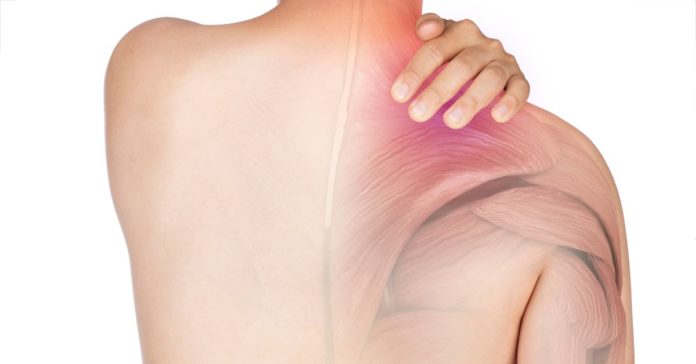Polymyositis is an autoimmune muscular disorder characterized by muscle fiber inflammation. What causes the illness is not known. The condition is, however, manageable with the right medical therapy.
Overview
Polymyositis is a condition that causes muscle inflammation and weakening on both sides of the body. The illness is considered an autoimmune disorder. It can make climbing stairs, rising from a seated posture, lifting items, and reaching aloft challenging. Gradually, muscles develop weakness over weeks or months. Also, there is a possibility of inflammation in other parts of the body, including the heart.
Physiotherapy plays a significant role in the therapeutic process.
About Polymyositis (PM)
Polymyositis is an inflammatory myopathy, a category of muscular disorders in which the muscles are inflamed.
The disease affects muscles on both sides of the body, making it difficult to run, walk, or lift items. The muscles closest to the centre of your body are the ones that are most commonly impacted.
Polymyositis has no recognized etiology. It mainly affects persons between the ages of 31 and 60. It is quite uncommon in persons under the age of 18. According to experts, Polymyositis is due to an autoimmune response. When the body attacks its tissues, it is called an autoimmune response.
The immune system’s inflammatory cells target muscle fibers directly in Polymyositis.
Polymyositis is not a hereditary illness. However, there may be genetic factors that influence the likelihood of developing an inflammatory myopathy.
How is Polymyositis Diagnosed?
Polymyositis is challenging to, diagnose, since symptoms vary from person to person, and it might be confused for muscular dystrophy. Polymyositis is frequently linked to other connective tissue autoimmune diseases such as scleroderma, systemic lupus erythematosus, rheumatoid arthritis, and Sjogren’s syndrome.
People with proximal muscle weakness and other polymyositis symptoms are frequently suspected of having the illness. The following are examples of possible tests:
- Tests to determine the levels of specific muscle enzymes like creatine kinase and aldolase in the blood
- Blood testing to detect particular autoantibodies that induce polymyositis’ autoimmune reaction
- Electromyography is a procedure that examines the health of muscles and the nerves that regulate them
- Muscle inflammation can be detected via imaging investigations such as an MRI scan or muscle ultrasound
- A muscle biopsy is used to detect muscular anomalies, including inflammation, injury, or infection
What are the symptoms of Polymyositis (PM)?
The following symptoms, affecting both sides of the body and gradually worsening, characterize Polymyositis:
- Muscle stiffness and discomfort
- Muscle weakness in the abdomen (abdomen), shoulders, upper arms, and hips is common
- Joint stiffness and pain
- Aspiration pneumonia: Difficulty in swallowing might also lead you to breathe liquids, such as saliva or food, into your lungs (aspiration) that can cause pneumonia.
- Breathing problems: You may experience breathing problems like shortness of breath or, in severe cases, respiratory failure if your chest muscles are affected by the disease.
- If the heart muscle gets inflamed, it can cause irregular cardiac beats
When to see a doctor?
If you experience unexplained muscular weakness, see a doctor right away.
Call 1860-500-1066 to book an appointment
What are the treatments available for managing Polymyositis?
The doctors design the treatment plans on a case-to-case basis. However, you could be given one or more of the following treatment options:
- Immunosuppressive medications: they work by blocking or slowing down the immune system in your body.
- Physical therapy: It involves stretching and strengthening exercises for the muscles. These may aid in the prevention of muscular atrophy
- Rest and heat treatment: This can assist with muscular aches and pains
- Braces or other specific devices: These aid with muscle support and mobility
- Corticosteroids are anti-inflammatory medications: They help in lowering inflammation in the body. Symptoms often improve within 4 to 6 weeks. After that, your doctor may reduce the dose of steroids to reduce adverse effects. To control the condition and minimize symptoms, some patients may need to take steroids regularly.
Conclusion
Intravenous immunoglobulin infusion (IVIG) has proven to be an effective therapy for severe Polymyositis. In the treatment of Polymyositis, physical therapy is also crucial.
Patients with Polymyositis in the acute stage will benefit from early medical therapy for the illness and flare-ups. When the condition becomes dormant, the patient may concentrate on muscular rehabilitation.
Frequently Asked Questions (FAQs)
How does PM progress?
PM generally develops after the age of 20 and progresses slowly. Although inflammatory myopathies such as PM can cause significant discomfort for some time, effective therapies are available, and these diseases are generally not life-threatening. In reality, many people recover from PM to some extent.
Is Polymyositis a sudden onset condition?
Muscle weakness can strike abruptly and last for weeks or months. Moreover, the severity of muscular weakness may change over time.
Is Polymyositis Curable?
Although Polymyositis has no cure, therapy can help you increase your muscle strength and function. The earlier polymyositis therapy begins, the more successful it will be, resulting in reduced difficulties.


















